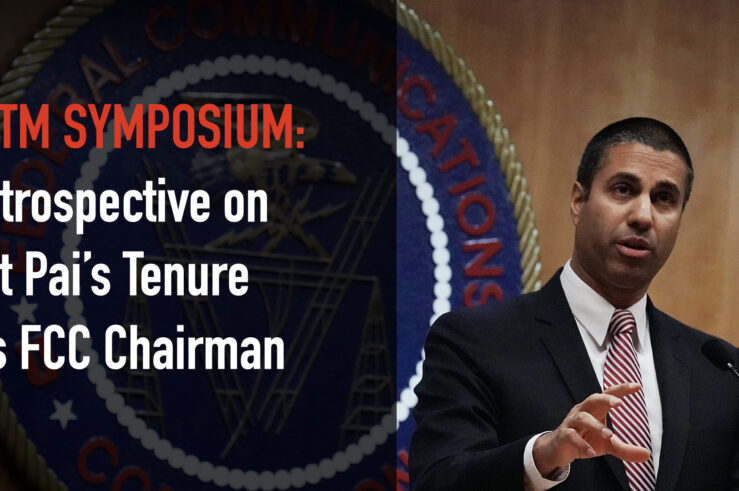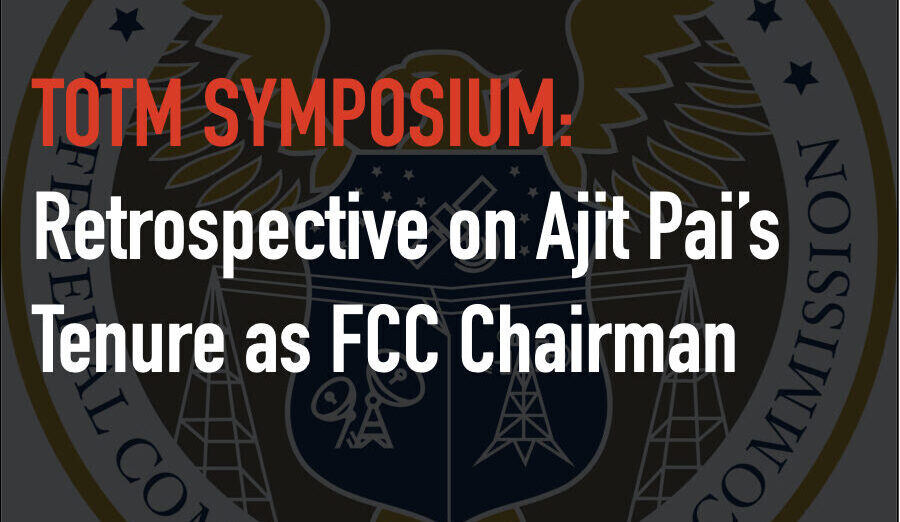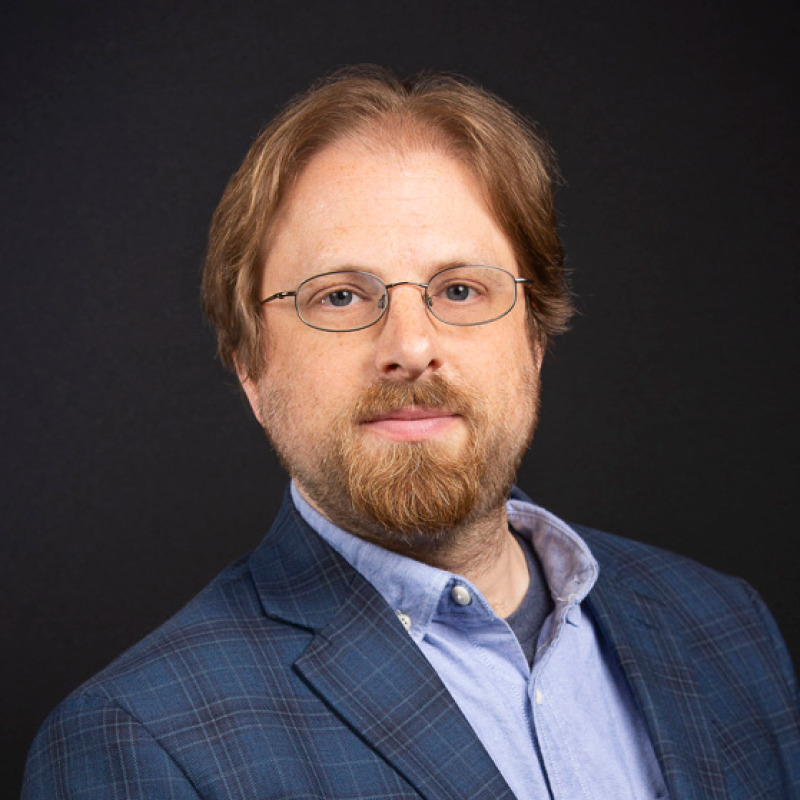
This article is a part of the Retrospective on Ajit Pai's Tenure as FCC Chairman symposium.

I was having a conversation recently with a fellow denizen of rural America, discussing how to create opportunities for academics studying the digital divide to get on-the-ground experience with the realities of rural telecommunications. He recounted a story from a telecom policy event in Washington, D.C., from not long ago. The story featured a couple of well-known participants in federal telecom policy as they were talking about how to close the rural digital divide. The punchline of the story was loud speculation from someone in attendance that neither of these bloviating telecom experts had likely ever set foot in a rural town.
And thus it is with most of those who debate and make telecom policy. The technical and business challenges of connecting rural America are different. Rural America needs different things out of its infrastructure than urban America. And the attitudes of both users and those providing service are different here than they are in urban America.
Federal Communications Commission Chairman Aji Pai—as I get to refer to him in writing for perhaps the last time—gets this. As is well-known, he is a native Kansan. He likely spent more time during his time as chairman driving rural roads than this predecessor spent hobnobbing at political fundraisers. I had the opportunity on one of these trips to visit a Nebraska farm with him. He was constantly running a bit behind schedule on this trip. I can attest that this is because he would wander off with a farmer to look at a combine or talk about how they were using drones to survey their fields. And for those cynics out there—I know there are some who don’t believe in the chairman’s interest in rural America—I can tell you that it meant a lot to those on the ground who had the chance to share their experiences.
Rural Digital Divide Policy on the Ground
Closing the rural digital divide is a defining public-policy challenge of telecommunications. It’s right there in the first sentence of the Communications Act, which established the FCC:
For the purpose of regulating interstate and foreign commerce in communication by wire and radio so as to make available, so far as possible, to all the people of the United States…a rapid, efficient, Nation-wide, and world-wide wire and radio communication service[.]
Depending on how one defines broadband internet, somewhere between 18 and 35 million Americans lack broadband internet access. No matter how you define it, however, most of those lacking access are in rural America.
It’s unsurprising why this is the case. Looking at North Dakota, South Dakota, and Nebraska—three of the five most expensive states to connect each household in both the 2015 and 2018 Connect America Fund models—the cost to connect a household to the internet in these states was twice that of connecting a household in the rest of the United States. Given the low density of households in these areas, often less than one household per square mile, there are relatively fewer economies of scale that allow carriers to amortize these costs across multiple households. We can add that much of rural America is both less wealthy than more urban areas and often doesn’t value the benefits of high-speed internet as highly. Taken together, the cost of providing service in these areas is much higher, and the demand for them much less, than in more urban areas.
On the flip side are the carriers and communities working to provide access. The reality in these states is that connecting those who live here is an all-hands-on-deck exercise. I came to Nebraska with the understanding that cable companies offer internet service via cable and telephone companies offer internet service via DSL or fiber. You can imagine my surprise the first time I spoke to a carrier who was using a mix of cable, DSL, fiber, microwave, and Wi-Fi to offer service to a few hundred customers. And you can also imagine my surprise when he started offering advice to another carrier—ostensibly a competitor—about how to get more performance out of some older equipment. Just last week, I was talking to a mid-size carrier about how they are using fixed wireless to offer service to customers outside of their service area as a stopgap until fiber gets out to the customer’s house.
Pai’s Progress Closing the Rural Digital Divide
This brings us to Chairman Pai’s work to close the rural digital divide. Literally on his first day on the job, he announced that his top priority was closing the digital divide. And he backed this up both with the commission’s agenda and his own time and attention.
On Chairman Pai’s watch, the commission completed the Connect America Fund Phase II Auction. More importantly, it initiated the Rural Digital Opportunity Fund (RDOF) and the 5G Fund for Rural America, both expressly targeting rural connectivity. The recently completed RDOF auction promises to connect 10 million rural Americans to the internet; the 5G Fund will ensure that all but the most difficult-to-connect areas of the country will be covered by 5G mobile wireless. These are top-line items on Commissioner Pai’s resume as chairman. But it is important to recognize how much of a break they were from the commission’s previous approach to universal service and the digital divide. These funding mechanisms are best characterized by their technology-neutral, reverse-auction based approach to supporting service deployment.
This is starkly different from prior generations of funding, which focused on subsidizing specific carriers to provide specific levels of service using specific technologies. As I said above, the reality on the ground in rural America is that closing the digital divide is an all-hands-on-deck exercise. It doesn’t matter who is offering service or what technology they are using. Offering 10 mbps service today over a rusty barbed wire fence or a fixed wireless antenna hanging off the branch of a tree is better than offering no service or promising fiber that’s going to take two years to get into the ground. And every dollar saved by connecting one house with a lower-cost technology is a dollar that can be used to connect another house that may otherwise have gone unconnected.
The combination of the reverse-auction and technology-neutral approaches has made it possible for the commission to secure commitments to connect a record number of houses with high-speed internet over an incredibly short period of time.
Then there are the chairman’s accomplishments on the spectrum and wireless–internet fronts. Here, he faced resistance from both within the government and industry. In some of the more absurd episodes of government in-fighting, he tangled with protectionist interests within the government to free up CBRS and other mid-band spectrum and to authorize new satellite applications. His support of fixed and satellite wireless has the potential to legitimately shake up the telecom industry. I honestly have no idea whether this is going to prove to be a good or bad bet in the long term—whether fixed wireless is going to be able to offer the quality and speed of service its proponents promise or whether it instead will be a short-run misallocation of capital that will require clawbacks and re-awards of funding in another few years—but the embrace of the technology demonstrated decisive leadership and thawed a too limited and ossified understanding of what technologies could be used to offer service. Again, as said above, closing the rural digital divide is an all-hands-on-deck problem; we do ourselves no favors by excluding possible solutions from our attempts to address it.
There is more that the commission did under Chairman Pai’s leadership, beyond the commission’s obvious order and actions, to close the rural digital divide. Over the past two years, I have had opportunities to work with academic colleagues from other disciplines on a range of federal funding opportunities for research and development relating to next generation technologies to support rural telecommunications, such as programs through the National Science Foundation. It has been wonderful to see increased FCC involvement in these programs. And similarly, another of Chairman Pai’s early initiatives was to establish the Broadband Deployment Advisory Committee. It has been rare over the past few years for me to be in a meeting with rural stakeholders that didn’t also include at least one member of a BDAC subcommittee. The BDAC process was a valuable way to communicate information up the chair, to make sure that rural stakeholders’ voices were heard in D.C.
But the BDAC process had another important effect: it made clear that there was someone in D.C. who was listening. Commissioner Pai said on his first day as chairman that closing the digital divide was his top priority. That’s easy to just say. But establishing a committee framework that ensures that stakeholders regularly engage with an appointed representative of the FCC, putting in the time and miles to linger with a farmer to talk about the upcoming harvest season, these things make that priority real.
Rural America certainly hopes that the next chair of the commission will continue to pay us as much attention as Chairman Pai did. But even if they don’t, we can rest with some comfort that he has set in motion efforts—from the next generation of universal service programs to supporting research that will help develop the technologies that will come after—that will serve us will for years to come.




